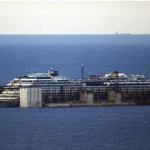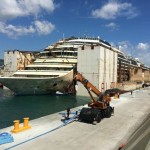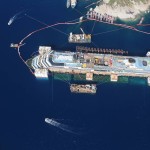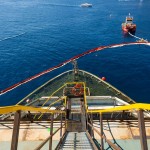Final Voyage of the Costa Concordia

The salvaged remains of the cruise ship Costa Concordia arrived in Genoa on July 27, 2014. The vessel was able to make the four-day journey from Giglio to Genoa without issue even when storms passed over the vessel during the voyage.
The Costa Concordia will be scrapped in a Genoa dry dock. Salvagers have stated the vessel will take up to 2 years to dismantle.
Some remaining facts about the Costa Concordia Incident:
- It’s the largest salvage operation ever attempted so far. The Costa Concordia is nearly twice the size of the Titanic
- It’s the most expensive salvage at a cost of 1.5 billion (USD).
- 80% of the dismantled vessel will be recycled including copper wiring, pipes and materials
- Over 50,000 tons of steel will be melted down and resold on the market
- 24 tons of debris was removed from the seabed including furniture, dishes, parts of the vessel along with personal effects
Past articles
- Costa Concordia (shipwrecklog.com)
- Costa Concordia Salvage Update (shipwrecklog.com)
- Costa Concordia Salvage Live Stream (shipwrecklog.com)
- Costa Concordia Update (shipwrecklog.com)
- Costa Concordia – Search and Recovery (shipwrecklog.com)
- Costa Concordia Parbuckling Completed (shipwrecklog.com)







